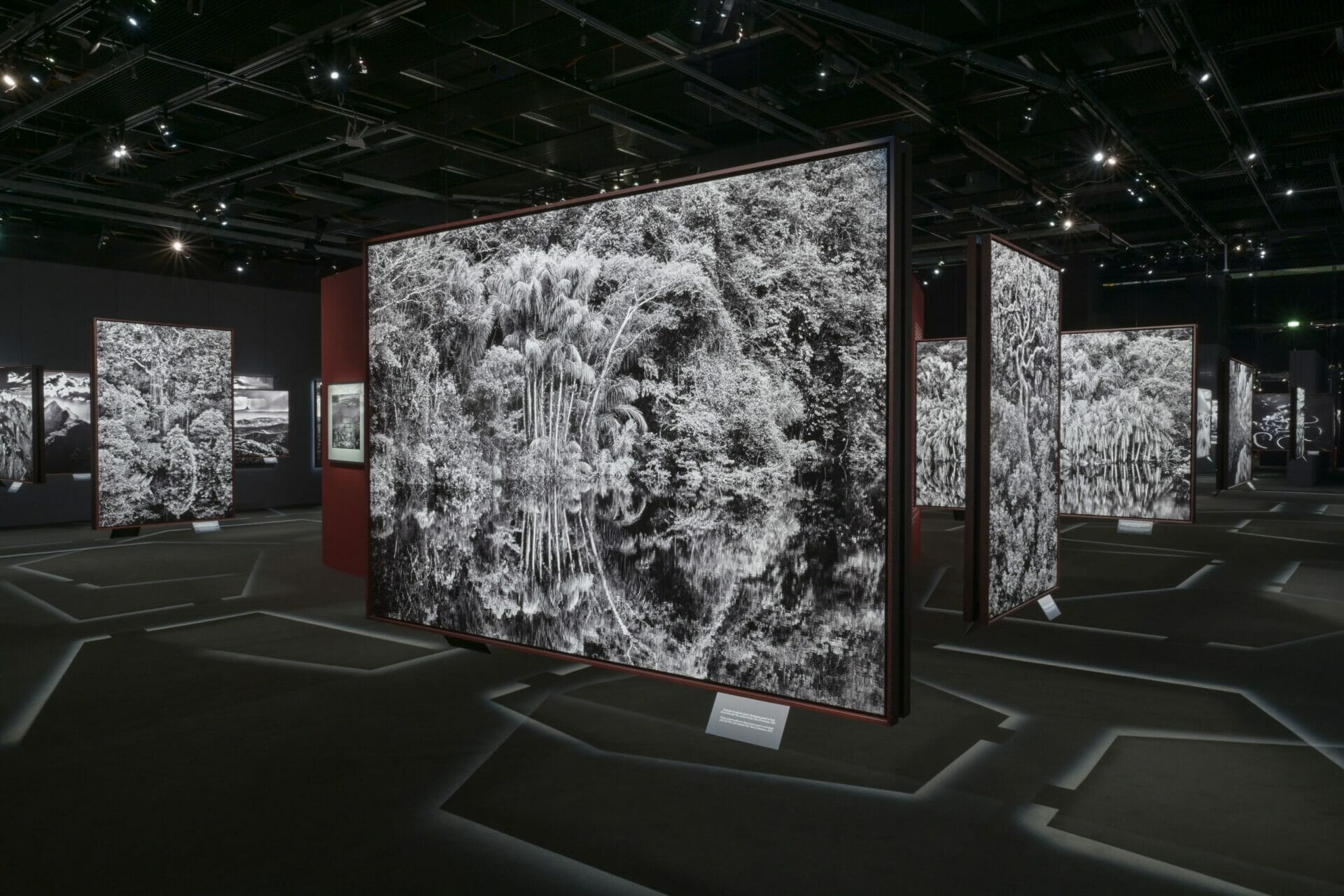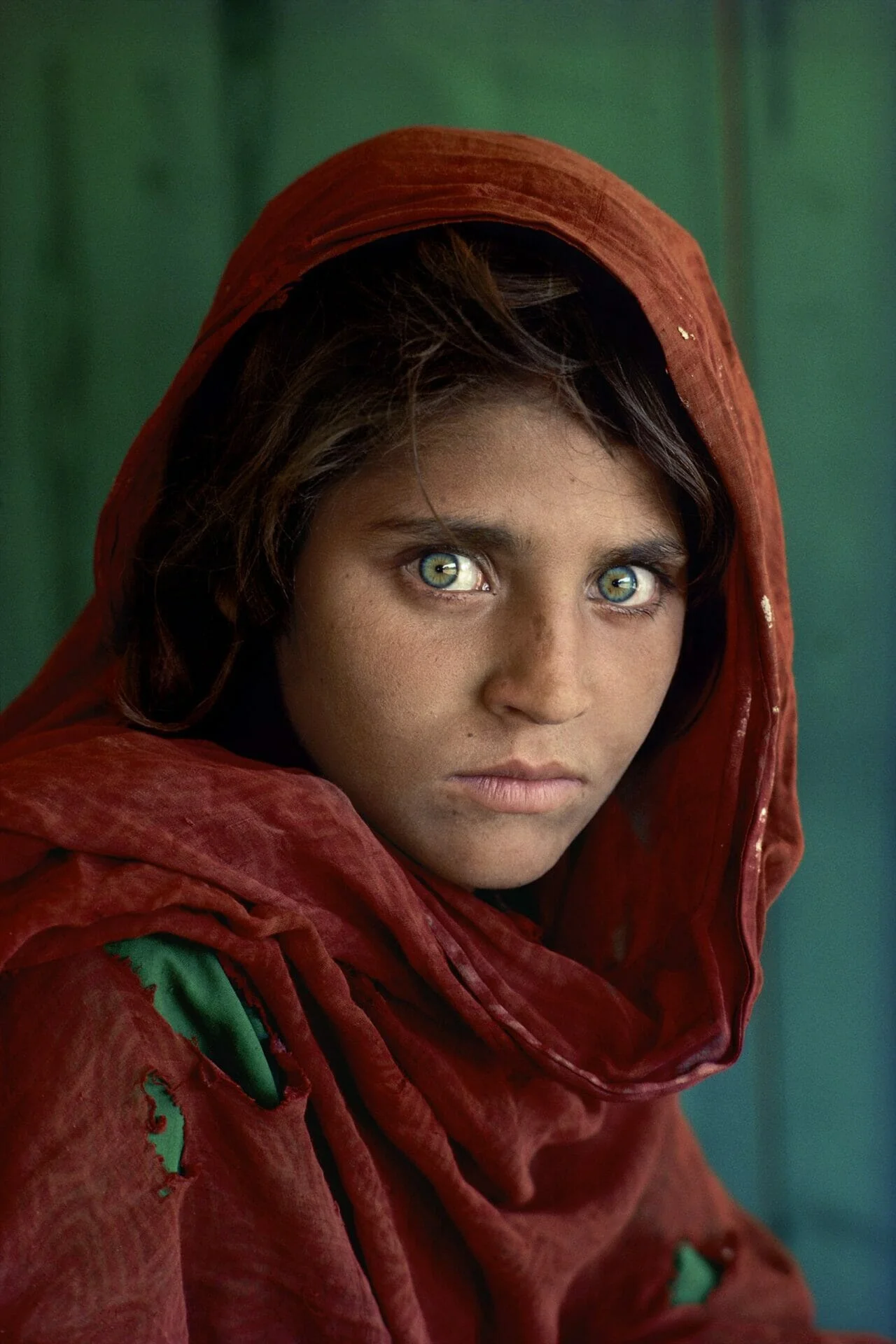
McCurry Capturing the World through his lens
Artist
Country
The exhibition called Le Monde de McCurry shows some of the large body of work of the American photographer Steve McCurry. The exhibition was conceived by Biba Giacchetti, founder of Sudest57, a photographic agency. She curated this presentation of 150 pictures printed in large format, which were taken over McCurry’s forty-year career. The original exhibition took place in Paris at the Musée Maillol. It is now touring in Europe under the name Icons.
McCurry’s early photojournalistic work
The visit begins with a series of black and white photos taken by McCurry as an aspiring young reporter. In the frames, silent people stand still and exude a nostalgic feeling. Candid scenes of playful boys make the viewers almost forget the context in which these photos were taken. They were part of an extensive media coverage of the Afghan War in the ‘eighties. At the time, McCurry was a freelance photojournalist for a magazine in the U.S. He traveled to South Asia looking for adventure and a great story to cover. He was not yet aware of the war in Afghanistan. But in Pakistan, he met two Afghan refugees who smuggled him into Nuristan, the first region to rise up against the Soviet-backed Kabul regime.
During the Soviet invasion in 1979, he traveled with the Afghan mujahideen fighters, giving him a chance to present them in a human, even artistic light. He makes one appreciate the poise and the tribal clothes of the rebels. However, the appearance of many weapons, bullets and knives reminds the viewers of the fundamental seriousness of the subject. One photograph shows a man praying, capturing the intensity of the faith moving these warriors.
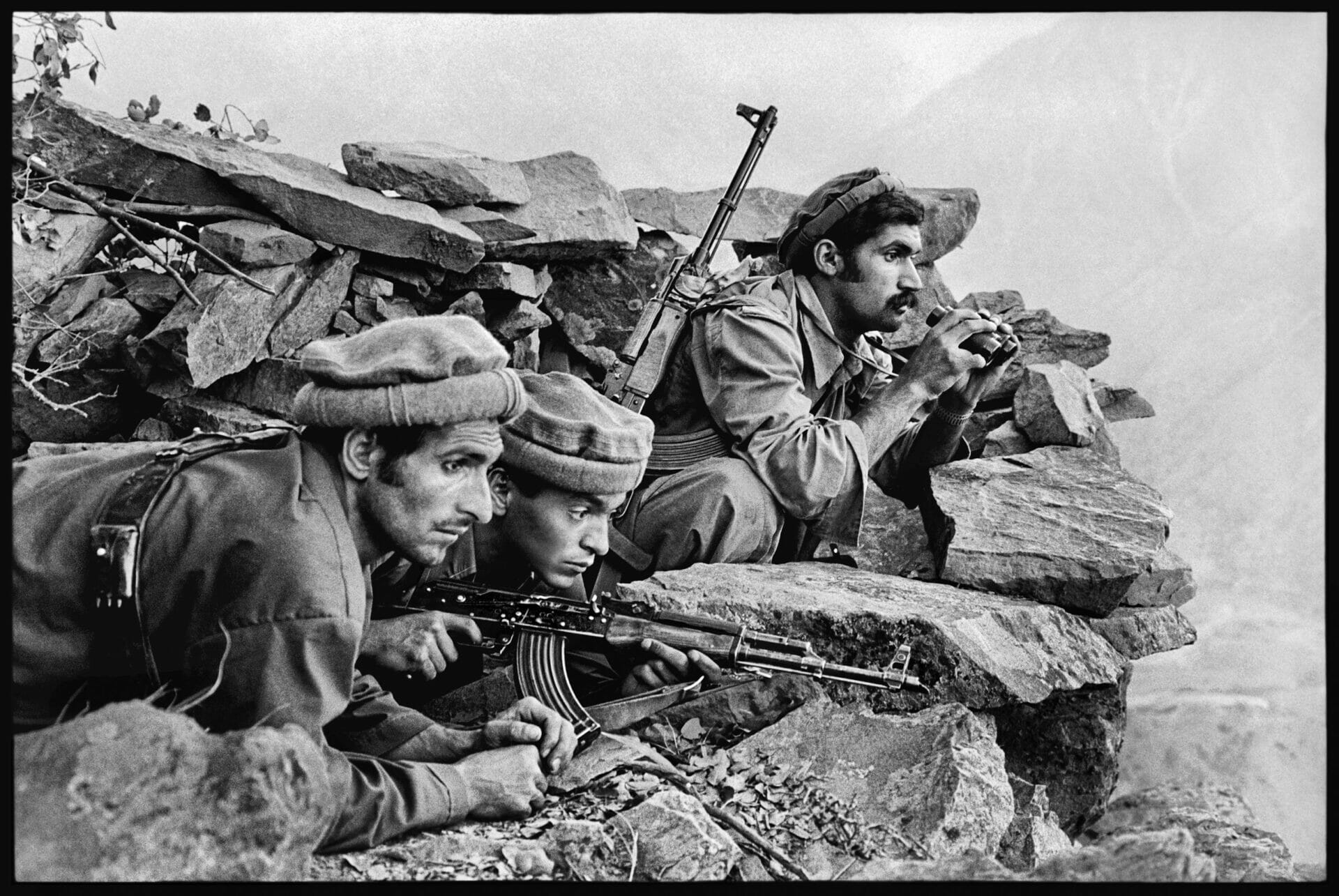
Afghan Girl
The exhibition’s centerpiece is one of the most renowned photographs of all time, commonly called Afghan Girl. It was taken in 1984 in a refugee camp in Pakistan. The image represents a young girl with fierce green eyes and her head covered with a ragged red shawl. The photo appeared on the June 1985 cover of National Geographic magazine. Since then she has become something of a symbol, increasing the visibility of the refugees fleeing their country at war. It exposed the Soviets’ attempt to suppress the mujahideen’s civilian support by bombing and depopulating rural areas. As a result, 2.8 million Afghans fled to Pakistan as refugees by 1982.
However, at the time, her unforgettable beauty did not even have a name. The fire in her eyes captivated people’s attention, who became curious to know her origins and her story. Hence, seventeen years later, McCurry went back with a team from National Geographic Television looking for her. It was in April 2002 when he met the woman, called Sharbat Gula, for the second time. McCurry took a second portrait of her. One could tell that time and hardship had left their mark on her, but McCurry is quoted as saying “she is as striking as she was all those years ago.” Gula lived in Pakistan until 2017, was deported back to Afghanistan, and then in 2021 was granted refugee status in Italy, following the takeover of Afghanistan by the Taliban.
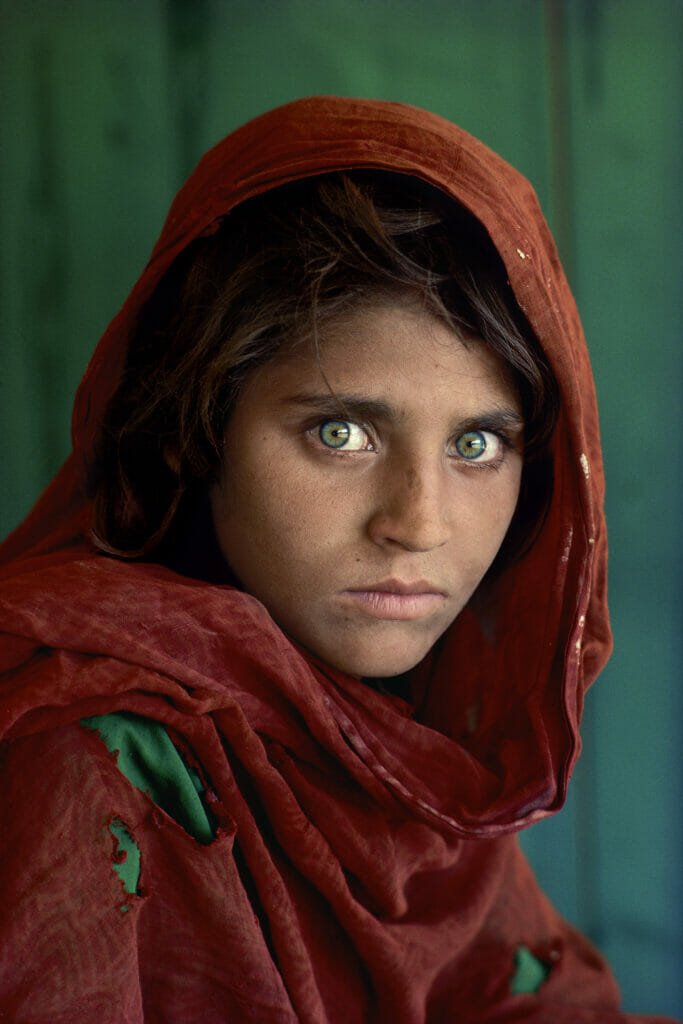
Close-up on the diverse nature of humankind
After the monochromatic series, the visit opens up to an explosion of colors with multiple large portraits. The audience can look at shots of different people from Afghanistan to India, from Southeast Asia to Africa, from Cuba to the United States, from Brazil to Italy.
McCurry succeeded in capturing human beings in all their different lights. One aspect is the richness of cultural expressions, looking at these individuals dressed in traditional costumes. Pigments cover faces and bodies, a testimony to the many techniques developed globally for the purpose of makeup. An audio guide helps the viewer with explanations about some of the encounters with the photographer.
McCurry managed to capture peoples’ eyes filled with life. In each photo, their gazes seemed to be piercing through the camera. They seem to reach and converse with the viewers. Arguably, one can read so clearly these facial expressions because humans are the same, fundamentally. Only minor variations exist, whether they are in the skin pigmentation or in the structure of the faces.
Similarly, the project Human by the French filmmaker, artist and environmentalist Yann Arthus-Bertrand shows breathtaking portraits. The documentary Human, released in 2015, is a recollection of real-life stories from over 2000 women and men in 60 countries. It shows endless close-ups of individual faces. Moreover, these animated portraits tell poignant stories, leaving the viewers in a state of suspension, as they mingle with questions about our human condition, whilst contemplating aerial footage of the planet earth.
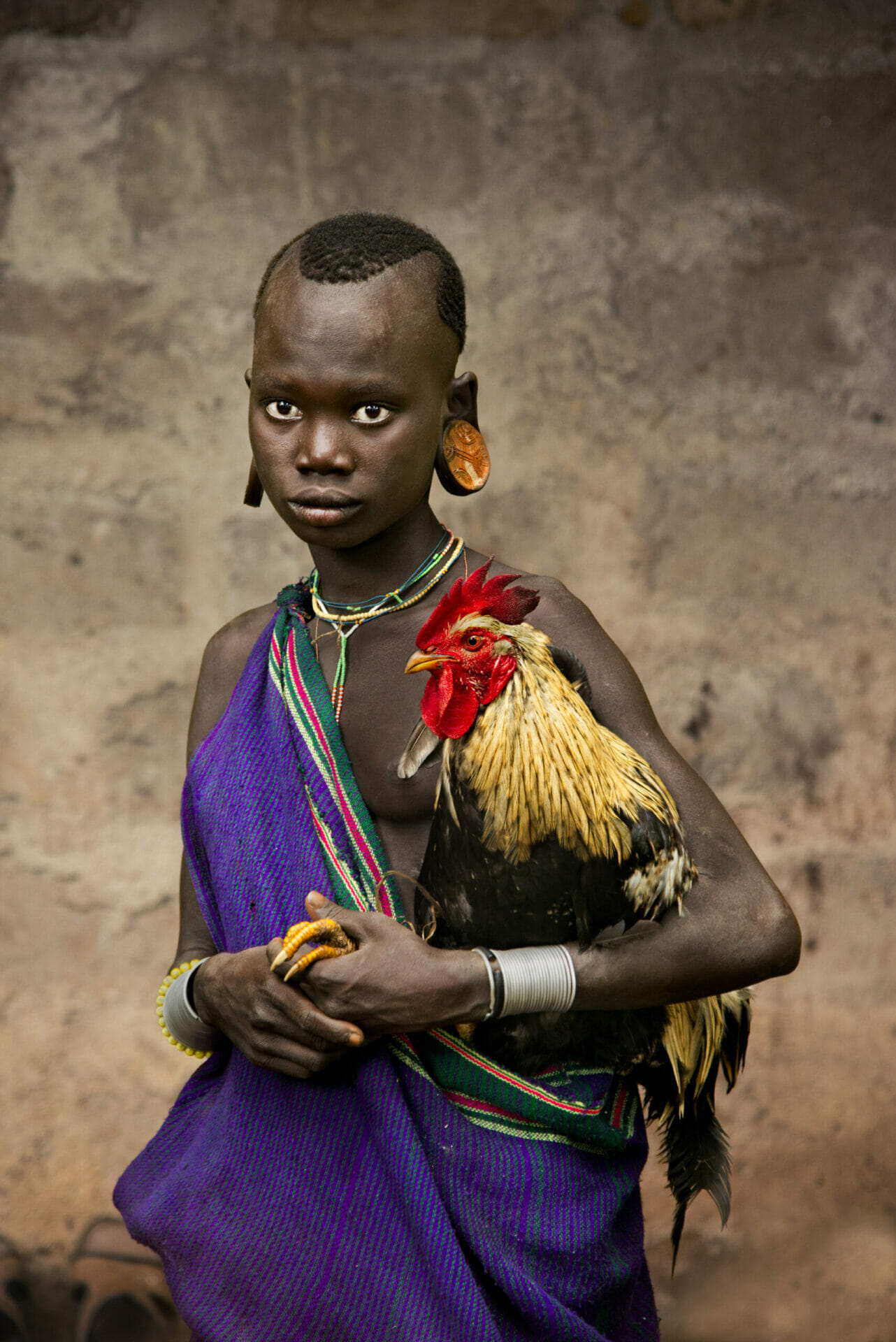
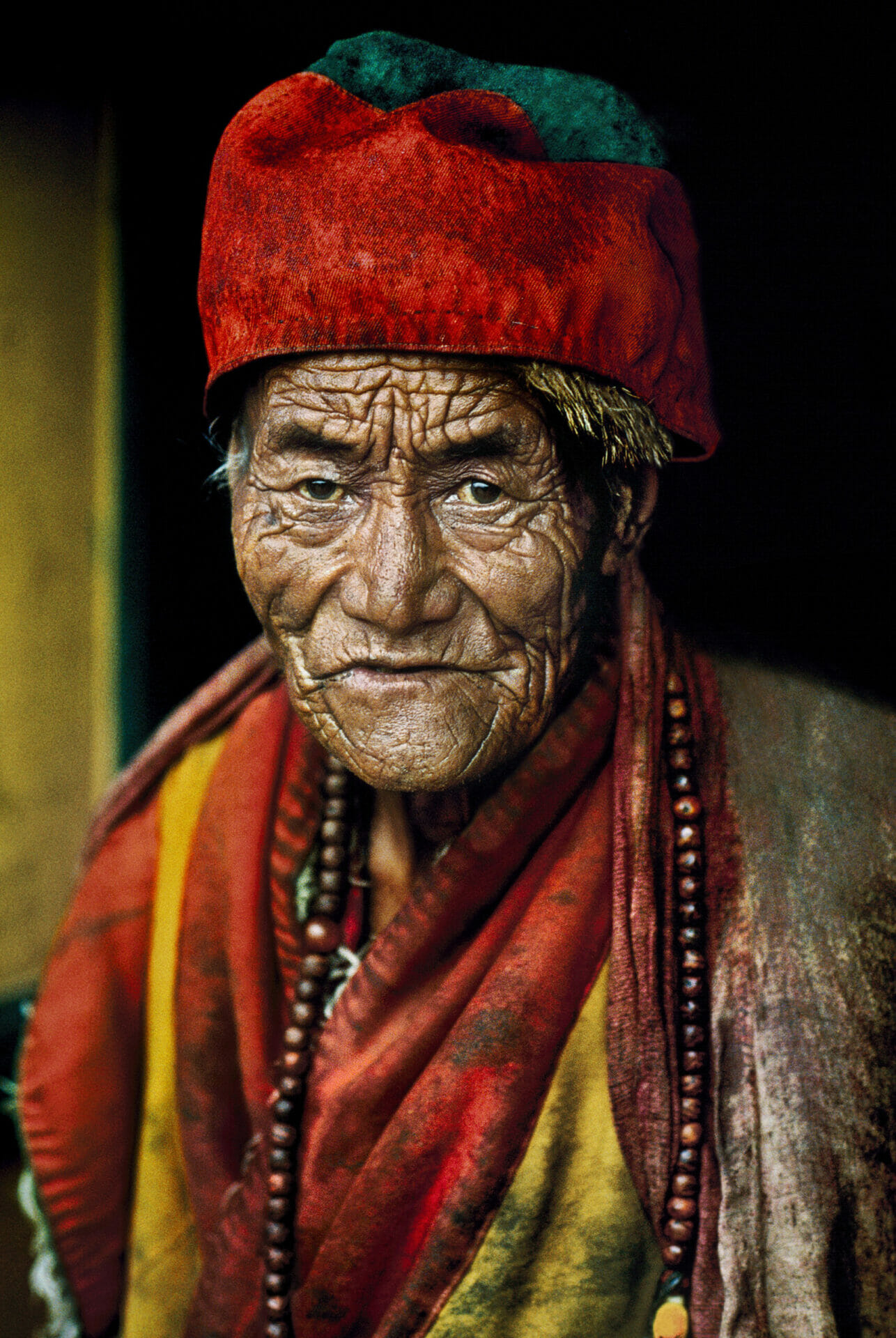
McCurry bearing the weight of the witness
Then the visit takes on a darker path as the exhibition shows the reverse side of the coin. A collection of instances of human destructive behavior mixed with images of the damage caused by natural disasters. Explosions, fire and smoke, buildings torn down, and oil spills illustrate the consequences of politics, wars, and ecological mismanagement. These issues also intersect as in the case of Kuwait, when Saddam Hussein’s decision to ignite the reserves of oil resulted in an ecological disaster.
Human civilization is not only at war against nature, but also against itself. As argued by Samuel P.Huntington in his 1996 book, Clash of Civilizations, conflicts are increasingly between civilizations since the collapse of communism. The term ‘civilization’ is defined as groups of people that differentiate themselves along the lines of history, culture and religion.
Photographer McCurry photographed the moments after the collapse of the Twin Towers of the World Trade Center in New York. Many consider this attack as one of the triggers in the American-led global War on Terror, which pitted some western countries against Islamist fundamentalist insurgencies. On the other hand, some refute Huntington’s theory. One argument propounds that in fact such conflicts see confrontations between politicians at the head of countries such as the U.S. and Afghanistan, and not two whole blocks of civilization.
Either way, as an American photographer interested in the lives of people in Afghanistan, this event hit close to home for McCurry. The photojournalist is a witness of events, even if he is highly emotionally involved, and his duty is to state the raw and immediate truth. In the documentary The Salt of the Earth (2015), fellow photographer Sebastião Salgado said that reporting the genocide in Rwanda broke him. He found a way out of the abyss of human nature when he turned himself towards nature. That lead him to redirect his work towards environmental awareness.
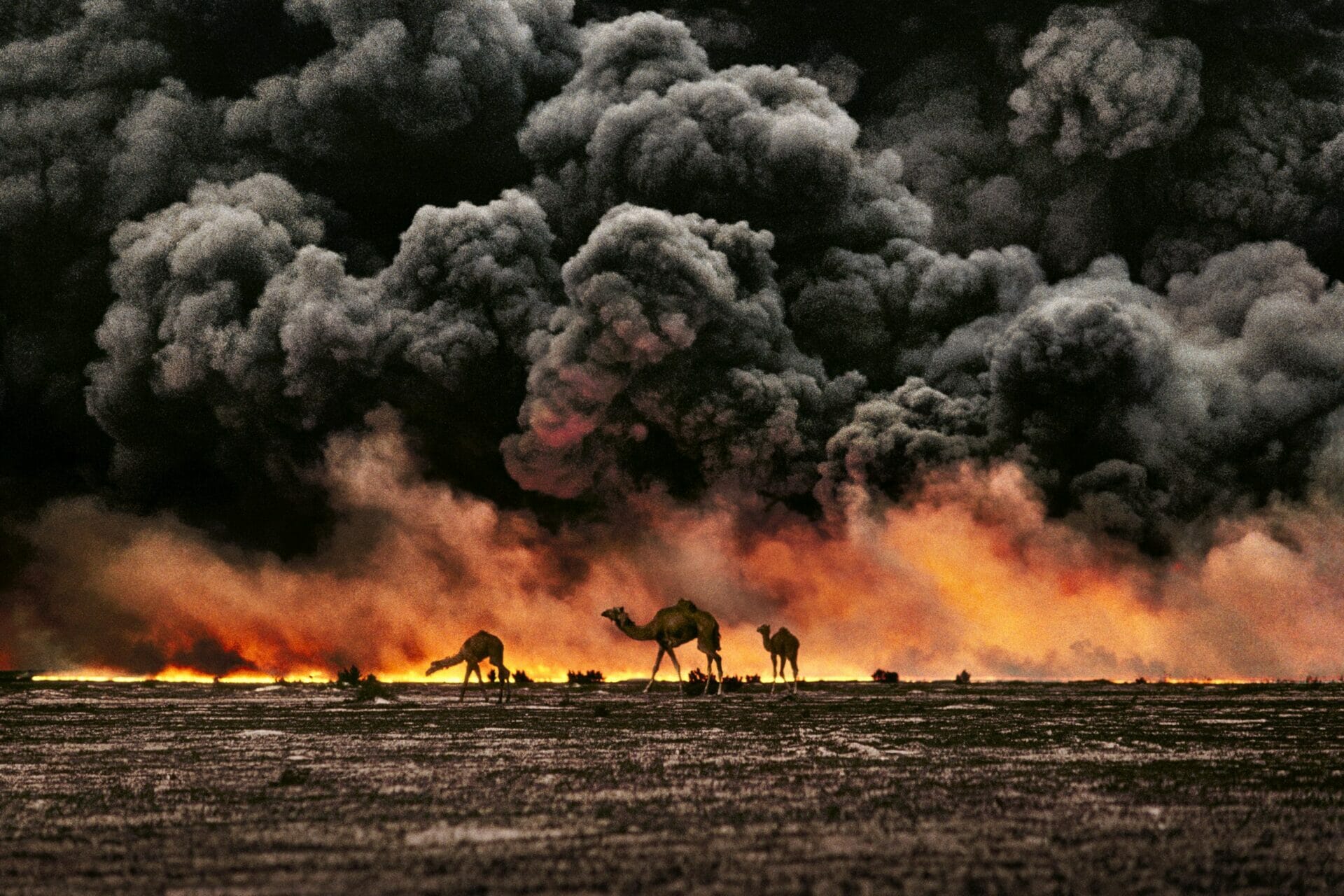
The photographer, an objective teller of tales
To sum up, the work of a photojournalist is to capture the world. To observe both the shadowed and the bright sides of humanity. For Steve McCurry, sometimes the most iconic places can be the hardest to photograph. For instance, he talks about the time he visited the Taj Mahal, one of the seven wonders of the world. Rare are the people who have never seen a picture of it. Hence, to revive the interest of the audience, to produce an eye-catching photograph, he needs to find new angles and new ways to present them. He found the opportunity to take a special shot as a local man bends over the reflection of the Taj Mahal on some nearby river.
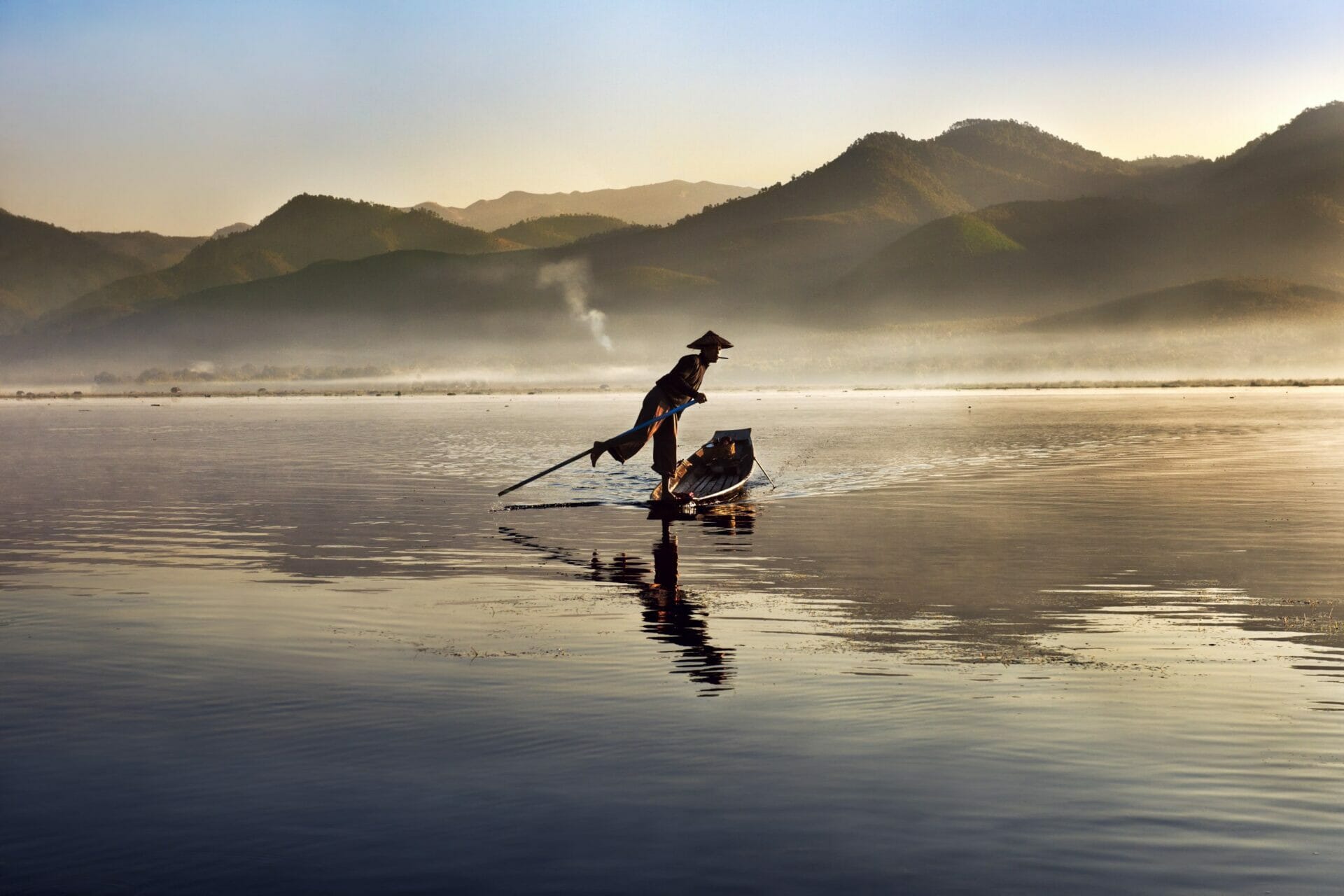
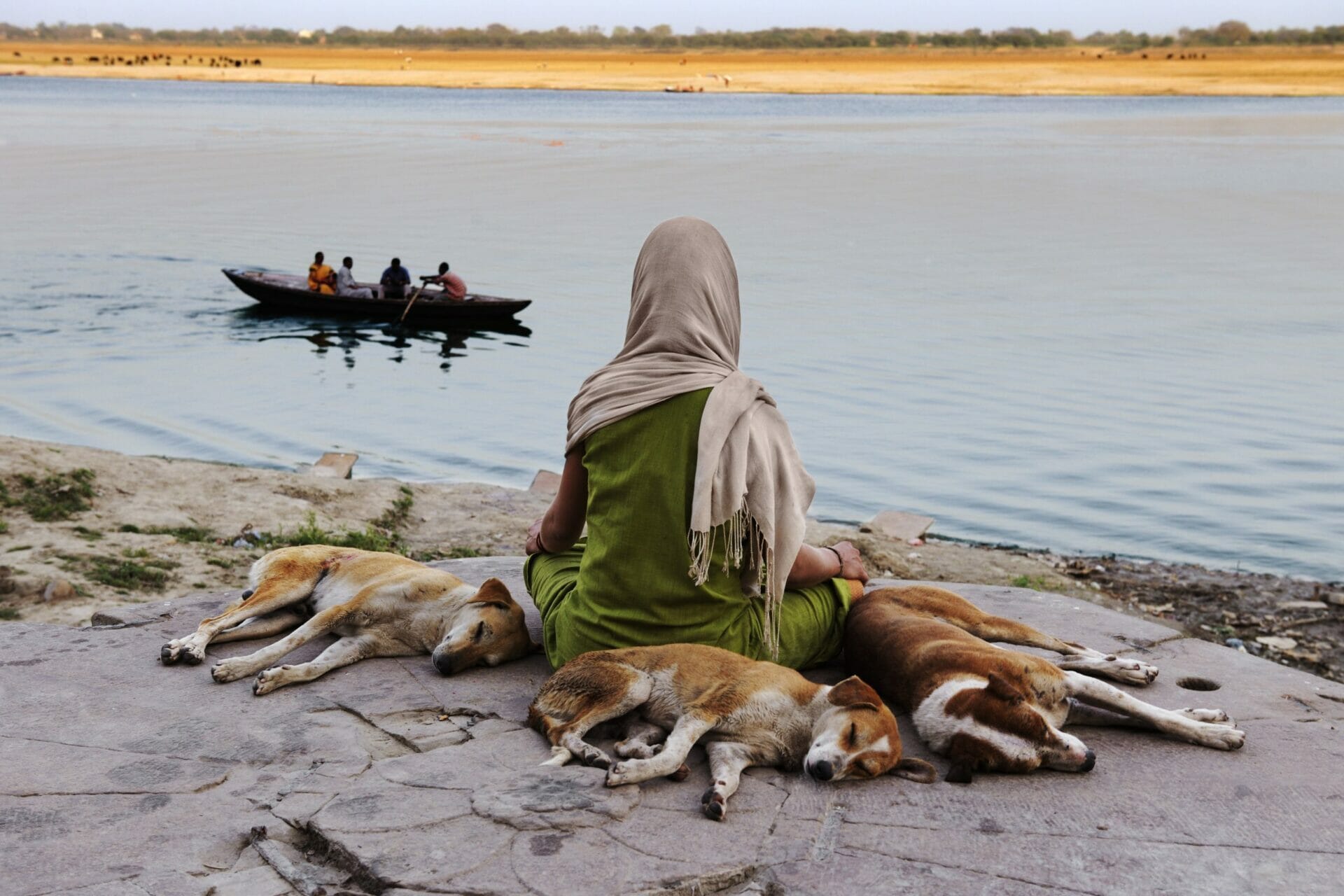
As a photographer, McCurry is determined to capture the right shot. He comes back once, twice, even several days in the same week to get the scene he has in mind. He is on the lookout for the right light or for the kind of animation that brings life to a landscape. The attentive eye will recognize a pattern throughout the series of work exhibited. McCurry always makes the living subject the center of his photos. He stages them around the face of a child, or a silhouette or even sometimes of an animal. Certainly, the landscapes are never truly empty. The frames always signal the presence of the artist and his way of seeing the world.
Tag
Buy a ☕ for Hypercritic





